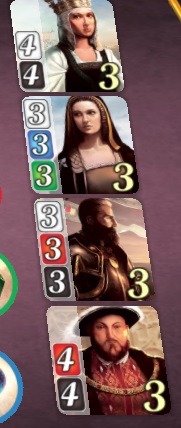I’ve heard the word Splendor used a lot in board gaming circles, but I never really played the game or went exploring what it is about. Until recently – I’ve had plenty of opportunities to play. This Splendor Board Game Review is the result of me finally discovering Splendor.
What do I think about it? Is it a good buy? Find out below.
Introduction to Splendor Board Game Review
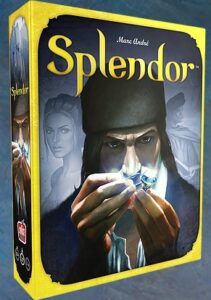
Players: 2-4, plays well with all numbers, but 3 players seems to be the sweet spot.
Playing time: 30 minutes
Recommended age: 8+
Complexity: simple
Components
There aren’t that many components in Splendor: gem tokens, development cards, and noble cards. But what it has, is high quality.
Gem tokens are the stars of Splendor. Very similar to poker chips: thick and weighty with stickers on the sides. They feel very good in your hands and you’ll find yourself playing with them more often than not. 90 development cards and 10 noble tiles are good quality as well.
Theme
The theme is the weakest link in Splendor. It’s one of the most “pasted-on” I’ve seen. The images on the cards are nice: mines, transportation routes, shops, and nobles all look great. So do the chips with gems.
But the problem is that you don’t notice any of this during the gameplay. You’re not trading diamonds or emeralds, you’ll refer to them only by color. On cards, you’ll only notice the numbers, as this is what actually matters on them.
It’s all very abstract and you’re not feeling as a renaissance trader at all. You might as well replace the theme with something completely different and the game would feel the same.
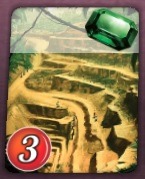
How is Splendor played?
The goal in Splendor is to be the first to collect 15 victory points. You do that by buying cards of value and adding nobles.
Cards are spread out in a 4×3 grid (three ranks of cards with 4 cards each). When a card is taken (bought or reserved), another one is drawn from one of the three stacks.
Buying cards is a combination of set collecting (their price in gems is printed on the cards) and engine building.
Each turn, you have four options:
- Take 3 gems of different colors.
- Take 2 gems of the same color (if there are at least 4 left after that).
- Reserve a card and get a gold token (joker gem).
- Buy a card from the table (or a reserved one).
The main trick is that each development card also has a permanent bonus resource (imagine it as a discount when buying future cards). That’s the engine-building part.
If you collect enough bonuses, you will also receive a noble card for extra points. And that’s pretty much all there is to know about the game.
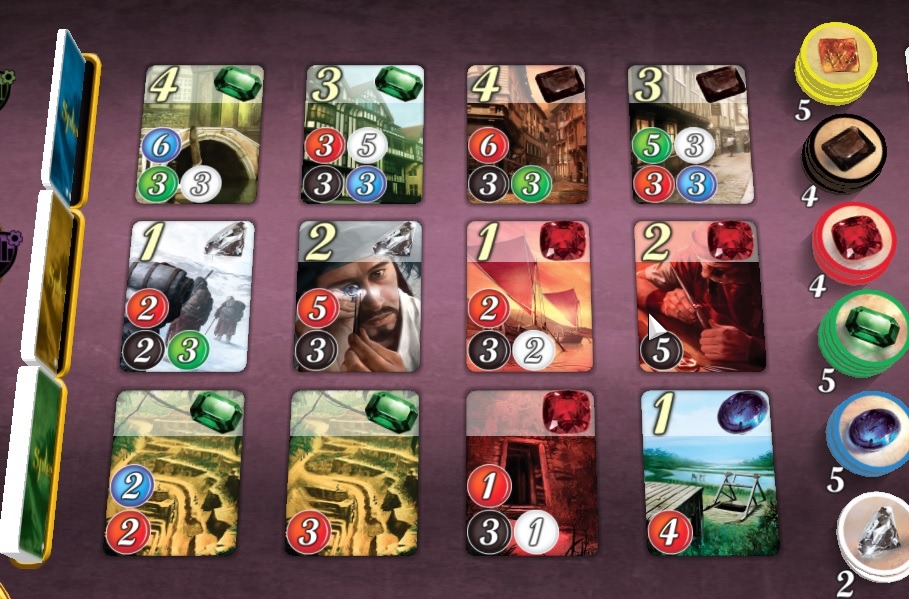
How does playing Splendor feel?
Splendor is extremely easy to learn and teach. You can be playing the game competently five minutes after you’ve opened the box. It’s one of those gateway games – board games you take out when you have friends over that are new to board gaming. Or kids.
Due to the limited amount of options, the gameplay is very smooth. The decisions you will make are not overly deep and you will usually decide in a matter of seconds what path you will pursue.
Where the better player will excel, is by planning ahead. What cards to collect resources for, what nobles to aim for, what is the opponent doing, and is there a way to block them? Maybe reserve a card they’re looking to get? Splendor is a game of open information: you know what gems and bonuses opponents have, so figuring out what card he/she is aiming for is not exactly rocket science.
Ideal player count?
Gameplay is most strategic with 2 players where you have to base your actions on the other player, not so much on the board itself. 4 player game features a more dynamic board – many cards can change out of your turn. You’re mostly reacting to the present situation, long-term planning is limited.
The three-player game manages to capture the best of both worlds, that’s why I said it’s the sweet spot number. But 2 and 4-player games play very well too, they’re just a bit different.
The element of luck is very small in Splendor. Sometimes you will get a lucky card drawn just before your turn, but most of the time it’s an abstract game of open information, where you plan how to best make your turns, but also have to consider what others are doing.
Long-term value
But its simplicity and lack of diversity are also the biggest negatives of Splendor. It gets old pretty fast. Once you’ve played a dozen of games, you’ve seen it all. Veteran players will soon put it back on the shelf and search for something deeper.
They will mainly use it as a means of introducing new players to board gaming. Or as a family board game that everyone can learn and enjoy. It’s one of the best in those aspects.
Cities of Splendor expansion pack
One of the ways to add variety and complexity to a game is through expansions. Splendor is no different and the expansion succeeds in its task – at least partially. You can’t go super complex if the foundations are so simple in the first place.
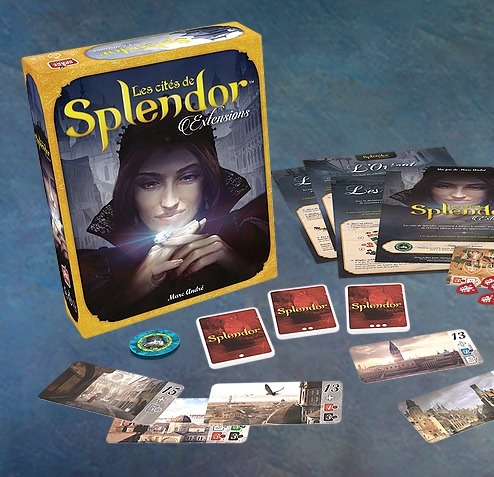
Cities of Splendor adds four separate expansions, meaning you can only add one at a time to the game.
- The Cities
Noble tiles are replaced by 3 city tiles. They act as objectives (how many points or cards you need) – fulfill one and you win outright. - The Trading Posts
These are special bonuses, earned by collecting specific cards. Bonuses may be: getting an extra gem token when drawing, more points from noble tiles, etc. - The Orient
This expansion adds new cards for each level. Cards are laid out on the right side of the grid and can be purchased like regular ones. The difference is that these are more powerful (or have special powers) than regular ones. - The Strongholds
Each player gets three towers. Whenever you purchase a card, you must put a stronghold on a face-up card on the table to pre-reserve it. You can also move strongholds on the board, from card to card. The goal is to have all three on the same card, which allows you to buy it, without spending a turn.
The Nobles’ images are based on real historic figures.
Digital edition on Steam
As is usual with the Steam version of board games, the Splendor is fully ported. There’s really not much to say – if it’s there in the physical version, it’s also present in the Steam edition.
Some things to point out though:
- Although the price is quite low (you can get it for a few bucks on sale), the expansions are not included. You have to buy those separately. But they are not expensive, as well.
- AI is sufficient for practice, but it does not offer the same experience as a human would. It plays too soft – it doesn’t snatch cards away or protect tokens enough.
- To feel true chess-like gameplay, play online with others. The lobby is quite populated, so it’s easy to find a game.
Conclusion
Despite some of its shortcomings, Splendor is one of those must-have (or at least must-try) games for every true board gamer. It’s a fun little chunk of a board game, that anybody can get into without a hassle.
Price-wise, I’d say it’s slightly on the high side, especially if you compare it to a similar gateway game, Kingdomino. I guess the gem tokens have a lot to do with that. I wonder how the price would be affected, would these be made of cardboard?
Further Reading:
Do you like what you just read? Consider subscribing for more content:

